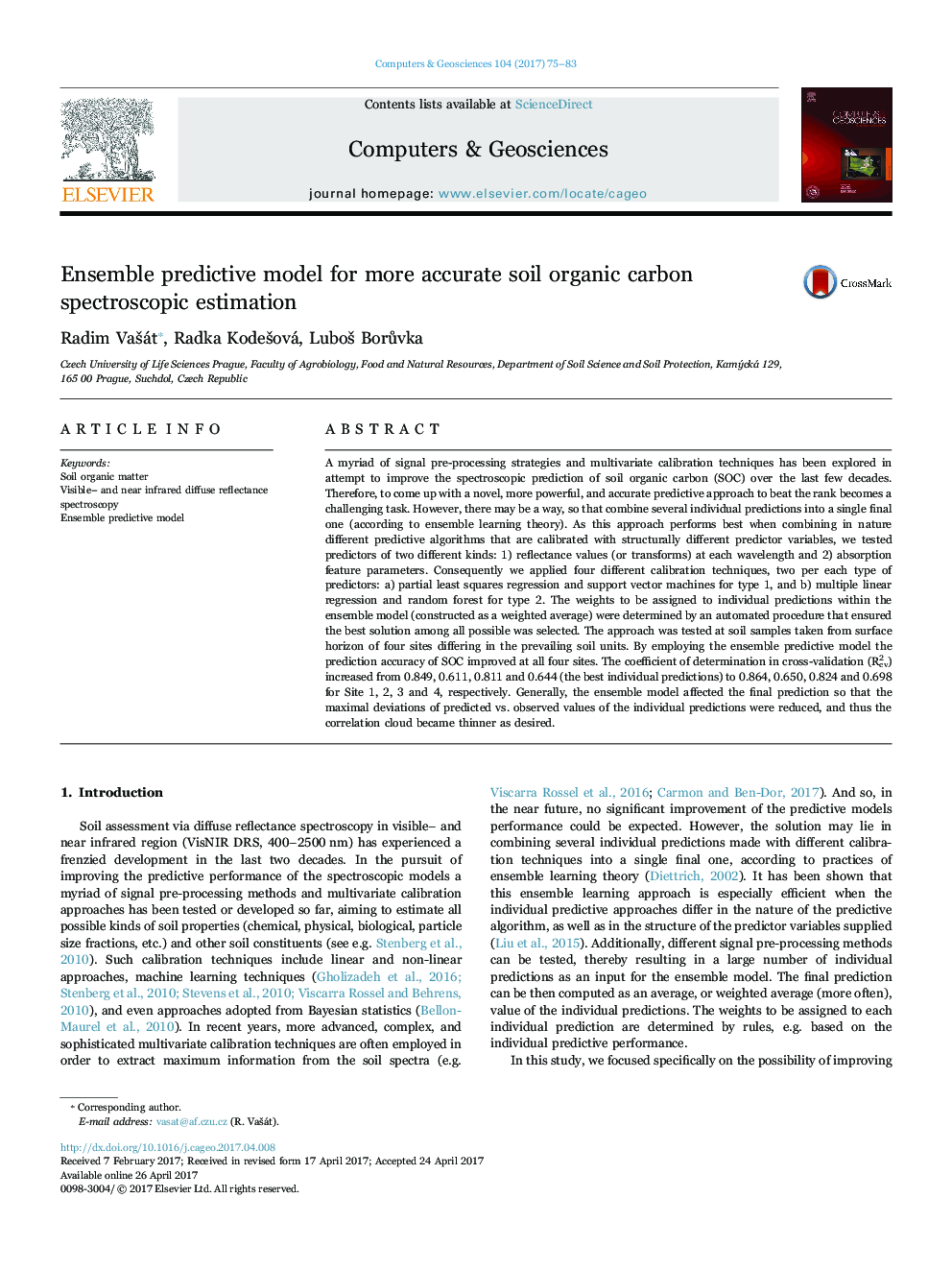| کد مقاله | کد نشریه | سال انتشار | مقاله انگلیسی | نسخه تمام متن |
|---|---|---|---|---|
| 4965260 | 1448280 | 2017 | 9 صفحه PDF | دانلود رایگان |
عنوان انگلیسی مقاله ISI
Ensemble predictive model for more accurate soil organic carbon spectroscopic estimation
ترجمه فارسی عنوان
مدل پیش بینی گروهی برای ارزیابی طیف سنج کربن آلی کربن دقیق تر
دانلود مقاله + سفارش ترجمه
دانلود مقاله ISI انگلیسی
رایگان برای ایرانیان
کلمات کلیدی
ماده آلی خاک، طیف سنجی بازتابی قابل مشاهده و نزدیک به مادون قرمز، مدل پیش بینی گروهی،
موضوعات مرتبط
مهندسی و علوم پایه
مهندسی کامپیوتر
نرم افزارهای علوم کامپیوتر
چکیده انگلیسی
A myriad of signal pre-processing strategies and multivariate calibration techniques has been explored in attempt to improve the spectroscopic prediction of soil organic carbon (SOC) over the last few decades. Therefore, to come up with a novel, more powerful, and accurate predictive approach to beat the rank becomes a challenging task. However, there may be a way, so that combine several individual predictions into a single final one (according to ensemble learning theory). As this approach performs best when combining in nature different predictive algorithms that are calibrated with structurally different predictor variables, we tested predictors of two different kinds: 1) reflectance values (or transforms) at each wavelength and 2) absorption feature parameters. Consequently we applied four different calibration techniques, two per each type of predictors: a) partial least squares regression and support vector machines for type 1, and b) multiple linear regression and random forest for type 2. The weights to be assigned to individual predictions within the ensemble model (constructed as a weighted average) were determined by an automated procedure that ensured the best solution among all possible was selected. The approach was tested at soil samples taken from surface horizon of four sites differing in the prevailing soil units. By employing the ensemble predictive model the prediction accuracy of SOC improved at all four sites. The coefficient of determination in cross-validation (R2cv) increased from 0.849, 0.611, 0.811 and 0.644 (the best individual predictions) to 0.864, 0.650, 0.824 and 0.698 for Site 1, 2, 3 and 4, respectively. Generally, the ensemble model affected the final prediction so that the maximal deviations of predicted vs. observed values of the individual predictions were reduced, and thus the correlation cloud became thinner as desired.
ناشر
Database: Elsevier - ScienceDirect (ساینس دایرکت)
Journal: Computers & Geosciences - Volume 104, July 2017, Pages 75-83
Journal: Computers & Geosciences - Volume 104, July 2017, Pages 75-83
نویسندگان
Radim VaÅ¡át, Radka KodeÅ¡ová, LuboÅ¡ Borůvka,
